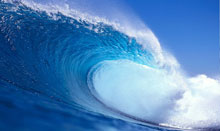ESSO - Indian National Centre for Ocean Information Services
(An Autonomous Body under the Ministry of Earth Sciences, Govt. of India)
Ocean Mixing and Monsoon (OMM)
Coupled Physical Processes in the Bay of Bengal and Monsoon Air-Sea Interaction:
Book:
| 1. | R. Venkatesan, Amit Tandon, Eric A. D Asaro, and M. A. Atmanand (2018). Observing the Oceans in Real Time, Springer International Publishing. 323 pp. |



